Treatment for sialorrhea (excessive saliva) in people with motor neuron disease/amyotrophic lateral sclerosis
- PMID: 35593746
- PMCID: PMC9121913
- DOI: 10.1002/14651858.CD006981.pub3
Treatment for sialorrhea (excessive saliva) in people with motor neuron disease/amyotrophic lateral sclerosis
Abstract
Background: Motor neuron disease (MND), also known as amyotrophic lateral sclerosis (ALS), is a progressive neurodegenerative condition that may cause dysphagia, as well as limb weakness, dysarthria, emotional lability, and respiratory failure. Since normal salivary production is 0.5 L to 1.5 L daily, loss of salivary clearance due to dysphagia leads to salivary pooling and sialorrhea, often resulting in distress and inconvenience to people with MND. This is an update of a review first published in 2011.
Objectives: To assess the effects of treatments for sialorrhea in MND, including medications, radiotherapy and surgery.
Search methods: On 27 August 2021, we searched the Cochrane Neuromuscular Specialised Register, CENTRAL, MEDLINE, Embase, AMED, CINAHL, ClinicalTrials.gov and the WHO ICTRP. We checked the bibliographies of the identified randomized trials and contacted trial authors as needed. We contacted known experts in the field to identify further published and unpublished papers.
Selection criteria: We included randomized controlled trials (RCTs) and quasi-RCTs, including cross-over trials, on any intervention for sialorrhea and related symptoms, compared with each other, placebo or no intervention, in people with ALS/MND.
Data collection and analysis: We used standard methodological procedures expected by Cochrane.
Main results: We identified four RCTs involving 110 participants with MND who were described as having intractable sialorrhea or bulbar dysfunction. A well-designed study of botulinum toxin B compared to placebo injected into the parotid and submandibular glands of 20 participants showed that botulinum toxin B may produce participant-reported improvement in sialorrhea, but the confidence interval (CI) was also consistent with no effect. Six of nine participants in the botulinum group and two of nine participants in the placebo group reported improvement (risk ratio (RR) 3.00, 95% CI 0.81 to 11.08; 1 RCT; 18 participants; low-certainty evidence). An objective measure indicated that botulinum toxin B probably reduced saliva production (in mL/5 min) at eight weeks compared to placebo (MD -0.50, 95% CI -1.07 to 0.07; 18 participants, moderate-certainty evidence). Botulinum toxin B may have little to no effect on quality of life, measured on the Schedule for Evaluation of Individual Quality of Life direct weighting scale (SEIQoL-DW; 0-100, higher values indicate better quality of life) (MD -2.50, 95% CI -17.34 to 12.34; 1 RCT; 17 participants; low-certainty evidence). The rate of adverse events may be similar with botulinum toxin B and placebo (20 participants; low-certainty evidence). Trialists did not consider any serious events to be related to treatment. A randomized pilot study of botulinum toxin A or radiotherapy in 20 participants, which was at high risk of bias, provided very low-certainty evidence on the primary outcome of the Drool Rating Scale (DRS; range 8 to 39 points, higher scores indicate worse drooling) at 12 weeks (effect size -4.8, 95% CI -10.59 to 0.92; P = 0.09; 1 RCT; 16 participants). Quality of life was not measured. Evidence for adverse events, measured immediately after treatment (RR 7.00, 95% CI 1.04 to 46.95; 20 participants), and after four weeks (when two people in each group had viscous saliva) was also very uncertain. A phase 2, randomized, placebo-controlled cross-over study of 20 mg dextromethorphan hydrobromide and 10 mg quinidine sulfate (DMQ) found that DMQ may produce a participant-reported improvement in sialorrhea, indicated by a slight improvement (decrease) in mean scores for the primary outcome, the Center for Neurologic Study Bulbar Function Scale (CNS-BFS). Mean total CNS-BFS (range 21 (no symptoms) to 112 (maximum symptoms)) was 53.45 (standard error (SE) 1.07) for the DMQ treatment period and 59.31 (SE 1.10) for the placebo period (mean difference) MD -5.85, 95% CI -8.77 to -2.93) with a slight decrease in the CNS-BFS sialorrhea subscale score (range 7 (no symptoms) to 35 (maximum symptoms)) compared to placebo (MD -1.52, 95% CI -2.52 to -0.52) (1 RCT; 60 participants; moderate-certainty evidence). The trial did not report an objective measure of saliva production or measure quality of life. The study was at an unclear risk of bias. Adverse events were similar to other trials of DMQ, and may occur at a similar rate as placebo (moderate-certainty evidence, 60 participants), with the most common side effects being constipation, diarrhea, nausea, and dizziness. Nausea and diarrhea on DMQ treatment resulted in one withdrawal. A randomized, double-blind, placebo-controlled cross-over study of scopolamine (hyoscine), administered using a skin patch, involved 10 randomized participants, of whom eight provided efficacy data. The participants were unrepresentative of clinic cohorts under routine clinical care as they had feeding tubes and tracheostomy ventilation, and the study was at high risk of bias. The trial provided very low-certainty evidence on sialorrhea in the short term (7 days' treatment, measured on the Amyotrophic Lateral Scelerosis Functional Rating Scale-Revised (ALSFRS-R) saliva item (P = 0.572)), and the amount of saliva production in the short term, as indicated by the weight of a cotton roll (P = 0.674), or daily oral suction volume (P = 0.69). Quality of life was not measured. Adverse events evidence was also very uncertain. One person treated with scopolamine had a dry mouth and one died of aspiration pneumonia considered unrelated to treatment.
Authors' conclusions: There is some low-certainty or moderate-certainty evidence for the use of botulinum toxin B injections to salivary glands and moderate-certainty evidence for the use of oral dextromethorphan with quinidine (DMQ) for the treatment of sialorrhea in MND. Evidence on radiotherapy versus botulinum toxin A injections, and scopolamine patches is too uncertain for any conclusions to be drawn. Further research is required on treatments for sialorrhea. Data are needed on the problem of sialorrhea in MND and its measurement, both by participant self-report measures and objective tests. These will allow the development of better RCTs.
Copyright © 2022 The Cochrane Collaboration. Published by John Wiley & Sons, Ltd.
Conflict of interest statement
Dr E James: none
Dr C Ellis: none.
Dr R Brassington: none. She is Managing Editor of Cochrane Neuromuscular. She joined the author team before peer review and was not thereafter involved in editorial assessment.
Dr S Sathasivam: received consultancy fees from UCB Pharma regarding research in myasthenia gravis. He has received a fee from Argenx to write a review on Real World Evidence of Myasthenia Gravis treatment. UCB Pharma and Argenx do not manufacture interventions currently of interest for the treatment of sialorrhea in MND. Dr Sathasivam has received consultancy fees from Merz for help in developing a protocol to manage sialorrhoea.
Prof CA Young has lectured at commercially‐sponsored meetings and participated in advisory boards funded by pharmaceutical companies, though never on sialorrhea in MND. She has grants on quality of life in MND funded by the Motor Neurone Disease Association, on quality of life in MS funded by the Multiple Sclerosis Society and pharmaceutical companies, and on quality of life in stroke funded by the NIHR grants; employer paid for multicenter trial work on taurousodeoxycholic acid sponsored by Irccs Istituto Nazionale Tumori‐Fondazione Pascale, tirasemtiv sponsored by Cytokinetics and ODM‐109 sponsored by Orion. Consultancy fees: Merck, Wellcome Trust, Roche, Teva, Novartis, Med Day, GW Pharmaceuticals and Actelion. Payment for lectures: Novartis, Merck, Sanofi Genzyme, Roche, Cytokinetics, MS Academy, and Teva. Travel/accommodation/meeting expense reimbursement: Biogen, Roche, and Teva. Reports on patient care for health service ombudsman. Unpaid work for patient charities: Darby Rimmer Foundation and My Name'5 Doddie. Payments direct to employer from various companies and educational providers for various teaching, reports, and meetings (no personal records).
Figures
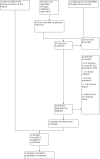
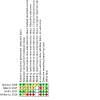

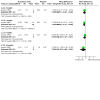
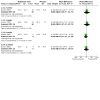

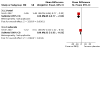
Update of
-
Treatment for sialorrhea (excessive saliva) in people with motor neuron disease/amyotrophic lateral sclerosis.Cochrane Database Syst Rev. 2011 May 11;(5):CD006981. doi: 10.1002/14651858.CD006981.pub2. Cochrane Database Syst Rev. 2011. Update in: Cochrane Database Syst Rev. 2022 May 20;5:CD006981. doi: 10.1002/14651858.CD006981.pub3. PMID: 21563158 Updated.
Comment in
-
What Are the Effects of Treatments for Sialorrhea in People With Motor Neuron Disease/Amyotrophic Lateral Sclerosis?: A Cochrane Review Summary With Commentary.Am J Phys Med Rehabil. 2023 Oct 1;102(10):926-928. doi: 10.1097/PHM.0000000000002272. Epub 2023 Apr 25. Am J Phys Med Rehabil. 2023. PMID: 37126792 No abstract available.
References
References to studies included in this review
Jackson 2009 {published and unpublished data}
-
- Gronseth G.Cochrane review on treatment for sialorrhoea in ALS/MND [personal communication]. Email to: C Young 18 November 2014.
-
- Jackson CE, Gronseth G, Rosenfeld J, Barohn RJ, Dubinsky R, Simpson CB, et al.Randomized double-blind study of botulinum toxin type B for sialorrhea in ALS patients. Muscle & Nerve 2009;39(2):137-43. [PMID: ] - PubMed
Odachi 2017 {published data only}
-
- Odachi K, Narita Y, Machino Y, Yamada T, Nishimura Y, Ota Y, et al.Efficacy of transdermal scopolamine for sialorrhea in patients with amyotrophic lateral sclerosis. Cogent Medicine 2017;4(1):365401. [EMBASE: 617838114]
-
- UMIN000011494.Assessment of the efficacy and the influence on swallowing function of transdermal scopolamine for ALS patients' drooling. upload.umin.ac.jp/cgi-open-bin/ctr_e/ctr_view.cgi?recptno=R000013085 (first received 2 September 2013).
Smith 2017 {published data only}
-
- NCT01806857.Clinical trial Nuedexta in subjects with ALS [The experimental treatment of bulbar dysfunction in amyotrophic lateral sclerosis (ALS)]. clinicaltrials.gov/ct2/show/NCT01806857 (first received 7 March 2013).
Weikamp 2016 {published data only}
-
- Weikamp JG, Schinagl DAX, Verstappen CCP, Schelhaas HJ, De Swart BJM, Kalf JG.Botulinum toxin-A injections vs radiotherapy for drooling in ALS. Acta Neurologica Scandanavica 2016;134(3):224-31. [PMID: ] - PubMed
References to studies excluded from this review
Guidubaldi 2011 {published data only}
-
- Guidubaldi A, Fasano A, Ialongo T, Piano C, Pompili M, Mascianà R, et al.Botulinum toxin A versus B in sialorrhea: a prospective, randomized, double-blind, crossover pilot study in patients with amyotrophic lateral sclerosis or Parkinson's disease. Movement Disorders 2011;26(2):313-9. [PMID: ] - PubMed
Isaacson 2020 {published data only}
-
- Bahroo L, Isaacson S, Pahwa R, Chary D, Clinch T, Lew M.Onset of action for rimabotulinumtoxinB in the treatment of adult sialorrhea. Movement Disorder 2019;34(Suppl 2):S28.
-
- Isaacson S, Lew M, Pagan F, Pahwa R, Chary D, Clinch T.Duration of rimabotulinumtoxinB action in the treatment of adult sialorrhea. Movement Disorder 2019;34(Suppl 2):S49-50.
-
- Isaacson S, Ondo W, Lew M, Dashtipour K, Chary D, Clinch T, et al.RimbotulinumtoxinB in the treatment of adult sialorrhea. Movement Disorder 2019;34(Suppl 2):S48.
-
- Isaacson S, Severt L, Clinch T.Mysticol: a controlled study of myobloc in the treatment of sialorrhea in Parkinson's disease and other neurological conditions. Toxicon 2016;123:S40-1.
Levitskii 2005 {published data only}
-
- Levitskii GN, Alekhin AV, Serdiuk AV, Morgunova MS, Koneva ON, Skvortsova VI.Pharmacological therapy of sialorrhea in patients with motor neuron disease. Zhurnal Nevropatologii i Psikhiatrii Imeni S. S. Korsakova 2005;105(3):19-22. [PMID: ] - PubMed
Lipp 2003 {published data only}
-
- Lipp A, Trottenberg T, Schink T, Kupsch A, Arnold G.A randomized trial of botulinum toxin A for treatment of drooling. Neurology 2003;61(9):1279-81. [PMID: ] - PubMed
References to ongoing studies
NCT01551940 2012 {published data only}
-
- NCT01551940.Toxin treatment for amyotrophic lateral sclerosis (ALS) related sialorrhea (ALS-TOX). clinicaltrials.gov/ct2/show/NCT01551940 (first posted 13 March 2012).
Additional references
Abhinav 2007
-
- Abhinav K, Stanton B, Johnston C, Hardstaff J, Orrell RW, Howard R, et al.Amyotrophic lateral sclerosis in South-East England: a population based study. The South-East England register for amyotrophic lateral sclerosis (SEALS Registry). Neuroepidemiology 2007;29(1-2):44-8. [PMID: ] - PubMed
Anagnostou 2013
-
- Anagnostou E, Rentzos M, Alexakis T, Zouvelou V, Zambelis T, Evdokimidis I.Volume matters: the influence of different botulinum toxin-A dilutions for sialorrhea in amyotrophic lateral sclerosis. Muscle & Nerve 2013;47(2):276-8. [PMID: ] - PubMed
Andersen 2001
-
- Andersen PM, Grönberg H, Franzen L, Funegard U.External radiation of the parotid glands significantly reduces drooling in patients with motor neurone disease with bulbar paresis. Journal of the Neurological Sciences 2001;191(1-2):111-4. [PMID: ] - PubMed
Bhatia 1999
Borasio 1997
-
- Borasio GB, Voltz R.Palliative care in amyotrophic lateral sclerosis. Journal of Neurology 1997;244(Suppl 4):S11-7. [PMID: ] - PubMed
Bourry 2013
-
- Bourry N, Guy N, Achard JL, Verrelle P, Clavelou P, Lapeyre M.Salivary glands radiotherapy to reduce sialorrhea in amyotrophic lateral sclerosis: dose and energy. Cancer Radiotherapie 2013;17(3):191-5. [PMID: ] - PubMed
Bradley 2001
-
- Bradley WG, Anderson F, Bromberg M, Gutmann L, Harati Y, Ross M, et al, the ALS CARE Study Group.Current management of ALS: comparison of the ALS CARE Database and the AAN Practice Parameter. Neurology 2001;57(3):500-4. - PubMed
Brooks 2000
-
- Brooks BR, Miller RG, Swash M, Munsat TL, World Federation of Neurology Research Group on Motor Neuron Diseases.El Escorial revisited: revised criteria for the diagnosis of amyotrophic lateral sclerosis. Amyotrophic Lateral Sclerosis and Other Motor Neuron Disorders 2000;1(5):293-9. [PMID: ] - PubMed
Burgen 1949
Bushara 1997
-
- Bushara KO.Sialorrhoea in amyotrophic lateral sclerosis: a hypothesis of a new treatment - botulinum toxin A injections of the parotid glands. Medical Hypotheses 1997;48(4):337-9. [PMID: ] - PubMed
Carod 2003
-
- Carod Artal FJ.Treatment of sialorrhoea in neurological diseases with trans-dermic injections of botulinum toxin type A in the parotid glands [Tratamiento de la sialorrea en enfermedades neurologicas mediante inyecciones transcutaneas de toxina botulinica A en las glandulas parotidas]. Neurologia 2003;18(5):280-4. [PMID: ] - PubMed
Cedarbaum 1999
-
- Cedarbaum JM, Stambler N, Malta E, Fuller C, Hilt D, Thurmond B, et al.The ALSFRS-R: a revised ALS functional rating scale that incorporates assessments of respiratory function. BDNF ALS Study Group (Phase III). Journal of the Neurological Sciences 1999;169(1-2):13-21. [DOI: 10.1016/s0022-510x(99)00210-5] - DOI - PubMed
Contarino 2007
-
- Contarino MF, Pompili M, Tittoto P, Vanacore N, Sabatelli M, Cedrone A, et al.Botulinum toxin B ultrasound-guided injections for sialorrhea in amyotrophic lateral sclerosis and Parkinson's disease. Parkinsonism & Related Disorders 2007;13(5):299-303. [PMID: ] - PubMed
Costa 2008
-
- Costa J, Rocha ML, Ferreira J, Evangelista T, Coelho M, De Carvalho M.Botulinum toxin type-B improves sialorrhea and quality of life in bulbar onset amyotrophic lateral sclerosis. Journal of Neurology 2008;255(4):545-50. [PMID: ] - PubMed
Deeks 2022
-
- Deeks JJ, Higgins JPT, Altman DG (editors).Chapter 10: Analysing data and undertaking meta-analyses. In: Higgins JPT, Thomas J, Chandler J, Cumpston M, Li T, Page MJ, et al (editors). Cochrane Handbook for Systematic Reviews of Interventions version 6.3 (updated February 2022). Cochrane, 2022. Available from www.training.cochrane.org/handbook.
Edaravone Study Group 2017
-
- Edaravone (MCI-186) ALS 19 Study Group.Safety and efficacy of edaravone in well defined patients with amyotrophic lateral sclerosis: a randomised, double-blind, placebo-controlled trial. Lancet Neurology 2017;16(7):505-12. - PubMed
Geffard 2018
Giess 2000
Gilio 2010
-
- Gilio F, Iacovelli E, Frasca V, Gabriele M, Giacomelli E, Picchiori F, et al.Botulinum toxin type A for the treatment of sialorrhoea in amyotrophic lateral sclerosis: a clinical and neurophysiological study. Amyotrophic Lateral Sclerosis 2010;11(4):359–63. - PubMed
GRADEpro GDT 2019 [Computer program]
-
- McMaster University (developed by Evidence Prime) GRADEpro GDT.Hamilton (ON): McMaster University (developed by Evidence Prime), accessed August 2019. Available at gradepro.org.
Gronseth 2014 [pers commun]
-
- Gronseth G.SPIT clarifications [personal communication]. Email to: CA Young 18 November 2014.
Guy 2011
-
- Guy N, Bourry N, Dallel R, Dualé C, Verrelle P, Lapeyre M, et al.Comparison of radiotherapy types in the treatment of sialorrhea in amyotrophic lateral sclerosis. Journal of Palliative Medicine 2011;14(4):391-5. [PMID: ] - PubMed
Harriman 2001
-
- Harriman M, Morrison M, Hay J, Revonta M, Eisen A, Lentle B.Use of radiotherapy for control of sialorrhea in patients with amyotrophic lateral sclerosis. Journal of Otolaryngology 2001;30(4):242-5. [PMID: ] - PubMed
Heller 2016
-
- Heller GZ, Manuguerra M, Chow R.How to analyze the Visual Analogue Scale: myths, truths and clinical relevance. Scandinavian Journal of Pain 2016;13:67-75. - PubMed
Hickey 1996
Higgins 2011
-
- Higgins JPT, Green S (editors).Cochrane Handbook for Systematic Reviews of Interventions Version 5.1.0 (updated March 2011). The Cochrane Collaboration, 2011. Available from training.cochrane.org/handbook/archive/v5.1.
Higgins 2019
-
- Higgins JPT, Lasserson T, Chandler J, Tovey D, Thomas J, Flemyng E, et al.Methodological expectations of Cochrane intervention reviews. community.cochrane.org/sites/default/files/uploads/MECIR%20PRINTED%20BOO... (accessed prior to 23 March 2022).
Higgins 2022
-
- Higgins JPT, Eldridge S, Li T (editors).Chapter 23: Including variants on randomized trials. In: Higgins JPT, Thomas J, Chandler J, Cumpston M, Li T, Page MJ, et al (editors). Cochrane Handbook for Systematic Reviews of Interventions version 6.3 (updated February 2022). Cochrane, 2022. Available from www.training.cochrane.org/handbook.
Janzen 1988
-
- Janzen VD, Rae RE, Hudson AJ.Otolaryngologic manifestations of amyotrophic lateral sclerosis. Journal of Otolaryngology 1988;17(1):41-2. [PMID: ] - PubMed
Kasarskis 2011
-
- Kasarskis EJ, Hodskins J, St Clair WH.Unilateral parotid electron beam radiotherapy as palliative treatment for sialorrhea in amyotrophic lateral sclerosis. Journal of the Neurological Sciences 2011;308(1-2):155-7. [PMID: ] - PubMed
Kersten 2014
Leigh 2003
Manrique 2005
Marks 2001
-
- Marks L, Turner K, O'Sullivan J, Deighton B, Lees A.Drooling in Parkinson's disease: a novel speech and language therapy intervention. International Journal of Language & Communication Disorders 2001;36 Suppl:282-7. [PMID: ] - PubMed
McGuire 1996
-
- McGuire D, Garrison L, Armon C, Barohn R, Bryan W, Miller RG, et al, SSNJV/CNTF ALS Study Group.Relationship of the Tufts Quantitative Neuromuscular Exam (TQNE) and the Sickness Impact Profile (SIP) in measuring progression of ALS. Neurology 1996;46(5):1442-4. [PMID: ] - PubMed
Meijer 2008
-
- Meijer JW, Van Kuijk AA, Geurts AC, Schelhaas HJ, Zwarts MJ.Acute deterioration of bulbar function after botulinum toxin treatment for sialorrhoea in amyotrophic lateral sclerosis. American Journal of Physical Medicine and Rehabilitation 2008;87(4):321-4. [PMID: ] - PubMed
Meningaud 2006
-
- Meningaud JP, Pitak-Arnnop P, Chikhani L, Bertrand JC.Drooling of saliva: a review of the etiology and management options. Oral Surgery, Oral Medicine, Oral Pathology, Oral Radiology and Endodontics 2006;101(1):48-57. [PMID: ] - PubMed
Miller 2007
-
- Miller RG, Mitchell JD, Lyon M, Moore DH.Riluzole for amyotrophic lateral sclerosis (ALS)/motor neuron disease (MND). Cochrane Database of Systematic Reviews 2007, Issue 1. Art. No: CD001447. [DOI: 10.1002/14651858.CD001447.pub3] - DOI
Mitsomoto 2003
-
- Mitsomoto H, Davidson M, Moore D, Gad N, Brandis M, Ringel S, et al, ALS CARE Study Group.Percutaneous endoscopic gastrostomy (PEG) in patients with ALS and bulbar dysfunction. Amyotrophic Lateral Sclerosis and Other Motor Neuron Disorders 2003;4(3):177-85. [PMID: ] - PubMed
Moher 2009
Møller 2011
-
- Møller E, Karlsborg M, Bardow A, Lykkeaa J, Nissen FH, Bakke M.Treatment of severe drooling with botulinum toxin in amyotrophic lateral sclerosis and Parkinson's disease: efficacy and possible mechanisms. Acta Odontologica Scandinavica 2011;69(3):151-7. [PMID: ] - PubMed
NEALS 2020
-
- Northeast Amyotrophic Lateral Sclerosis Consortium.Become a NEALS Member. www.neals.org/for-als-researchers/become-a-neals-member (accessed 21 February 2020).
Neppelberg 2007
-
- Neppelberg E, Haugen DF, Thorsen L, Tysnes OB.Radiotherapy reduces sialorrhea in amyotrophic lateral sclerosis. European Journal of Neurology 2007;14(12):1373-7. [PMID: ] - PubMed
Newall 1996
-
- Newall AR, Orser R, Hunt M.The control of oral secretions in bulbar ALS/MND. Journal of the Neurological Sciences 1996;139 Suppl:43-4. [PMID: ] - PubMed
NICE 2016
-
- National Institute for Health and Care Excellence.Motor Neurone Disease: assessment and management (Guideline No. 42). www.nice.org.uk/guidance/ng42/resources/motor-neurone-disease-assessment... (accessed prior to 23 March 2022).
Oliver 1996
-
- Oliver D.The quality of care and symptom control - the effects on the terminal phase of ALS/MND. Journal of the Neurological Sciences 1996;139 Suppl:134-6. [PMID: ] - PubMed
Paracka 2019
Petracca 2015
Porta 2001
RevMan 2014 [Computer program]
-
- The Nordic Cochrane Centre, The Cochrane Collaboration Review Manager (RevMan).Version 5.3. Copenhagen: The Nordic Cochrane Centre, The Cochrane Collaboration, 2014.
Rodriguez‐Murphy 2011
-
- Rodriguez-Murphy E, Marti-Bonmati E, Camps-Seguí E, Bagán JV.Manually guided botulinum toxin type A submandibular injections for the treatment of sialorrhea in tube-fed patients with advanced amyotrophic lateral sclerosis. American Journal of Health-System Pharmacy 2011;68(18):1680-1. [PMID: ] - PubMed
Rosen 2008
Rowland 2001
-
- Rowland LP, Shneider NA.Amyotrophic lateral sclerosis. New England Journal of Medicine 2001;344(22):1688-700. [PMID: ] - PubMed
Sakakura 1985
-
- Sakakura Y, Majima Y, Saida S, Ukai K, Miyoshi Y.Reversibility of reduced mucociliary clearance in chronic sinusitis. Clinical Otolaryngology and Allied Sciences 1985;10(2):79-83. [PMID: ] - PubMed
Schlüter 2018
-
- Schlüter DK, Tennant A, Mills R, Diggle PJ, Young CA, TONiC study group.Risk factors for social withdrawal in amyotrophic lateral sclerosis/motor neurone disease. Amyotrophic Lateral Sclerosis and Frontotemporal Degeneration 2018;19:591-8. - PubMed
Schünemann 2022a
-
- Schünemann HJ, Vist GE, Higgins JPT, Santesso N, Deeks JJ, Glasziou P, et al.Chapter 15: Interpreting results and drawing conclusions. In: Higgins JPT, Thomas J, Chandler J, Cumpston M, Li T, Page MJ, et al (editors). Cochrane Handbook for Systematic Reviews of Interventions version 6.3 (updated February 2022). Cochrane, 2022. Available from www.training.cochrane.org/handbook.
Schünemann 2022b
-
- Schünemann HJ, Higgins JPT, Vist GE, Glasziou P, Akl EA, Skoetz N, et al.Chapter 14: Completing ‘Summary of findings’ tables and grading the certainty of the evidence. In: Higgins JPT, Thomas J, Chandler J, Cumpston M, Li T, Page MJ, et al (editors). Cochrane Handbook for Systematic Reviews of Interventions version 6.3 (updated February 2022). Cochrane, 2022. Available from www.training.cochrane.org/handbook.
Scott 2005
-
- Scott KR, Kothari MJ, Venkatesh YS, Murphy T, Simmons Z.Parotid gland injections of botulinum toxin A are effective in treating sialorrhea in amyotrophic lateral sclerosis. Journal of Clinical Neuromuscular Disease 2005;7(2):62-5. [PMID: ] - PubMed
Smith 2017a
-
- Smith R, Pioro E, Myers K, Sirdofsky M, Goslin K, Meekins G, Yu H, Wymer J, Cudkowicz M, Macklin EA, Schoenfeld D, Pattee G.Erratum to: Enhanced Bulbar Function in Amyotrophic Lateral Sclerosis: The Nuedexta Treatment Trial. Neurotherapeutics 2017;14(3):830. [DOI: 10.1007/s13311-017-0517-z] - DOI - PMC - PubMed
Stalpers 2002
-
- Stalpers LJ, Moser EC.Results of radiotherapy for drooling in amyotrophic lateral sclerosis. Neurology 2002;58(8):1308. [PMID: ] - PubMed
Suskind 2002
-
- Suskind DL, Tilton A.Clinical study of Botulinum-A toxin in the treatment of sialorrhea in children with cerebral palsy. Laryngoscope 2002;112:73-81. - PubMed
Talbott 2016
-
- Talbott EO, Malek AM, Lacomis D.The epidemiology of amyotrophic lateral sclerosis. In: Handbook of Clinical Neurology. Vol. 138. New York: Random House, 2016:225-38. - PubMed
Tan 2001
-
- Tan EK, Lo YL, Seah A, Auchus AP.Recurrent jaw dislocation after botulinum toxin treatment for sialorrhoea in amyotrophic lateral sclerosis. Journal of the Neurological Sciences 2001;190(1-2):95-7. [PMID: ] - PubMed
Veis 2000
-
- Veis S.Salivary flow in persons with ALS. In: 11th International Symposium on ALS/MND; 2000; Aarhus, Denmark (Poster). (accessed prior to 23 March 2022).
Verma 2006
-
- Verma A, Steele J.Botulinum toxin improves sialorrhea and quality of living in bulbar amyotrophic lateral sclerosis. Muscle & Nerve 2006;34(2):235-7. [PMID: ] - PubMed
Wilson 1924
References to other published versions of this review
Grundy 2008
-
- Grundy N, Sathasivam S, Ellis C, Johnson J.Treatment for sialorrhea in people with motor neuron disease or amyotrophic lateral sclerosis. Cochrane Database of Systematic Reviews 2008, Issue 1. Art. No: CD006981. [DOI: 10.1002/14651858.CD006981] - DOI
Publication types
MeSH terms
Substances
LinkOut - more resources
Full Text Sources
Medical
Miscellaneous

